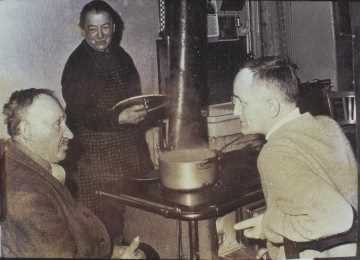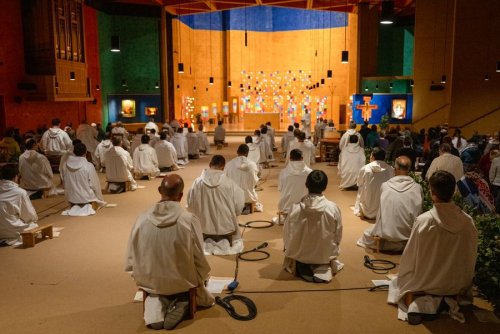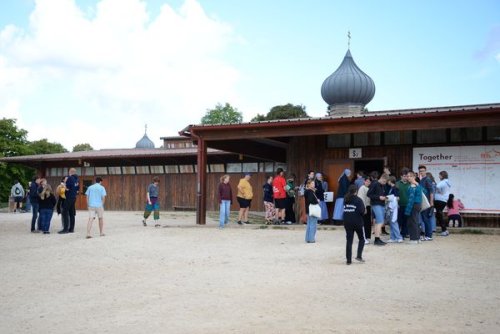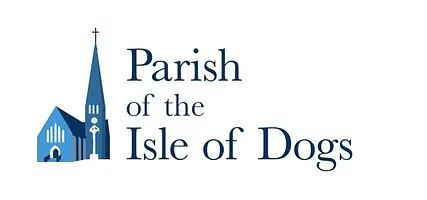07/08/2024 0 Comments
Taize community
Taize community
# News

Taize community
Taizé -The Beginnings
Everything began in 1940 when, at the age of twenty-five, Brother Roger left Switzerland, the country where he was born, to go and live in France, the country his mother came from. For years he had been ill with tuberculosis, and during that long convalescence he had matured within him the call to create a community.
When the Second World War began, he had the conviction that without wasting time he should come to the assistance of people going through this ordeal, just as his grandmother had done during the First World War. The small village of Taizé, where he settled, was quite close to the demarcation line dividing France in two: it was well situated for sheltering refugees fleeing the war. Friends from Lyon started giving the address of Taizé to people in need of a place of safety.
In Taizé, thanks to a modest loan, Brother Roger bought a house with outlying buildings that had been uninhabited for years. He asked one of his sisters, Genevieve, to come and help him offer hospitality. Among the refugees they sheltered were Jews. Material resources were limited. There was no running water, so for drinking water they had to go to the village well. Food was simple, mainly soups made from corn flour bought cheaply at the nearby mill. Out of discretion towards those he was sheltering, Brother Roger prayed alone; he often went to sing far from the house, in the woods. So that none of the refugees, Jews or agnostics, would feel ill-at-ease, Genevieve explained to each person that it was better for those who wished to pray to do so alone in their rooms.
Brother Roger’s parents, knowing that their son and daughter were in danger, asked a retired French officer who was a friend of the family to watch over them. In the autumn of 1942, he warned them that their activities had been found out and that everyone should leave at once. So until the end of the war, it was in Geneva that Brother Roger lived and it was there that he began a common life with his first brothers. They were able to return to Taizé in 1944.

The first brothers’ commitment
In 1945, a young lawyer from the region set up an association to take charge of children who had lost their parents in the war. He suggested to the brothers that they welcome a certain number of them in Taizé. A men’s community could not receive children. So Brother Roger asked his sister Genevieve to come back to take care of them and become their mother. On Sundays, the brothers also welcomed German prisoners-of-war interned in a camp nearby Taizé.
Gradually other young men came to join the original group, and on Easter Day 1949, there were seven of them who committed themselves together for their whole life in celibacy and to a life together in great simplicity.
In the silence of a long retreat, during the winter of 1952-53, the founder of the community wrote the Rule of Taizé, expressing for his brothers “the essential that makes the common life possible”.
The Taizé Community comprises around eighty brothers from different church backgrounds – Catholic, Anglican, Protestant – and from nearly thirty countries. By its very existence, it is a “parable of community”: a tangible sign of reconciliation between divided Christians and separated peoples.

Most of the brothers live in the village of Taizé (Burgundy, France). Other brothers, who have been sent on mission, share the living conditions of those around them in Asia, Africa, Latin America and in a district of the Paris suburbs. These small fraternities of a few brothers are a simple presence among their neighbours and in the local churches. By their very nature they remain temporary.
During the year, the community welcomes tens of thousands of young adults from Europe and other continents. They come for week-long meetings, during which they experience prayer and life together with time for biblical reflection and exchange with others, in an environment where they can ask questions about their lives and their future.
Since 1978, the community has organised a European Meeting of Young Adults at the end of the year. It is held in a different city each year, at the invitation of the local churches. Youth meetings are also held in Africa, Asia and the Americas. Several pilgrimages to countries with an Orthodox tradition have allowed young people to discover the treasures of this heritage.

Over the years, many Church leaders have visited Taizé. Pope John Paul II came to Taizé in 1986, Ecumenical Patriarch Bartholomew of Constantinople in 2017 and, since 1973, four Archbishops of Canterbury. The Lutheran bishops of Sweden came to Taizé together twice, in 1994 and 2022, and the Lutheran bishops of Finland in 2024. Metropolitans and bishops from various Orthodox Churches have also visited Taizé, as have many bishops and pastors from all over the world.
Alongside the brothers, Sisters of Saint Andrew, an international Catholic community founded more than seven centuries ago, and Polish Ursuline sisters play an important part in welcoming the young people who visit Taizé.
The brothers of the community live from their work alone. They do not accept donations or personal inheritances for themselves.


Comments